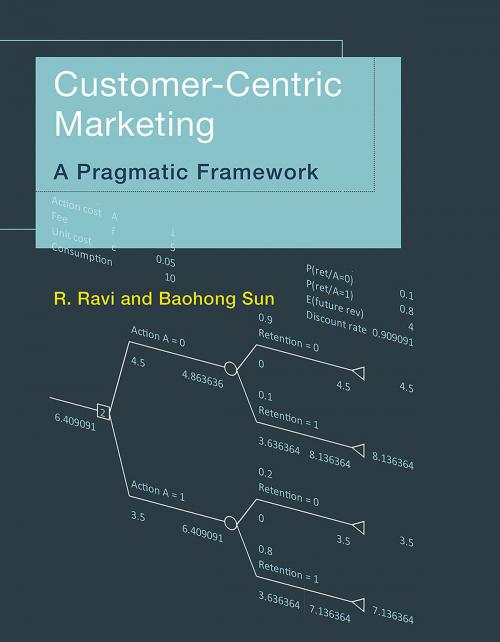| Author: | R. Ravi, Baohong Sun | ISBN: | 9780262333481 |
| Publisher: | The MIT Press | Publication: | March 11, 2016 |
| Imprint: | The MIT Press | Language: | English |
| Author: | R. Ravi, Baohong Sun |
| ISBN: | 9780262333481 |
| Publisher: | The MIT Press |
| Publication: | March 11, 2016 |
| Imprint: | The MIT Press |
| Language: | English |
State-of-the-art analytic and quantitative methods for using big data to craft effective real-time, dynamic customer-centric marketing plans.
The revolution in big data has enabled a game-changing approach to marketing. The asynchronous and continuous collection of customer data carries rich signals about consumer preferences and consumption patterns. Use of this data can make marketing adaptive, dynamic, and responsive to changes in individual customer behavior. This book introduces state-of-the-art analytic and quantitative methods for customer-centric marketing (CCM). Rather than using a snapshot from the data to plot a single campaign-centric marketing plan, these methods draw on cutting-edge research in optimization and interactive marketing with the goal of maximizing long-term profit from data collected over time. The aim is to teach readers to apply optimization tools to derive analytical solutions leading to customized, dynamic, proactive, and real-time marketing decisions.
The book develops the CCM framework and illustrates it with four cases that span the life cycle of marketing: pricing, win-back, cross-sales, and customer service allocation. The text walks the reader through real-world examples of applying the framework (supported by spreadsheet models available online), then explains the key concepts: modeling consumer choice; segmenting customers into latent classes based on sensitivity; computing customer lifetime value (CLV); and dynamic optimization. The reader then learns to incorporate the continuous learning of customer preference into an adaptive feedback loop for marketing decisions. The book can be used as a text for MBA students or as a professional reference.
This book is based on joint research developed at Carnegie Mellon University when both authors were on the faculty at the Tepper School of Business.
State-of-the-art analytic and quantitative methods for using big data to craft effective real-time, dynamic customer-centric marketing plans.
The revolution in big data has enabled a game-changing approach to marketing. The asynchronous and continuous collection of customer data carries rich signals about consumer preferences and consumption patterns. Use of this data can make marketing adaptive, dynamic, and responsive to changes in individual customer behavior. This book introduces state-of-the-art analytic and quantitative methods for customer-centric marketing (CCM). Rather than using a snapshot from the data to plot a single campaign-centric marketing plan, these methods draw on cutting-edge research in optimization and interactive marketing with the goal of maximizing long-term profit from data collected over time. The aim is to teach readers to apply optimization tools to derive analytical solutions leading to customized, dynamic, proactive, and real-time marketing decisions.
The book develops the CCM framework and illustrates it with four cases that span the life cycle of marketing: pricing, win-back, cross-sales, and customer service allocation. The text walks the reader through real-world examples of applying the framework (supported by spreadsheet models available online), then explains the key concepts: modeling consumer choice; segmenting customers into latent classes based on sensitivity; computing customer lifetime value (CLV); and dynamic optimization. The reader then learns to incorporate the continuous learning of customer preference into an adaptive feedback loop for marketing decisions. The book can be used as a text for MBA students or as a professional reference.
This book is based on joint research developed at Carnegie Mellon University when both authors were on the faculty at the Tepper School of Business.















